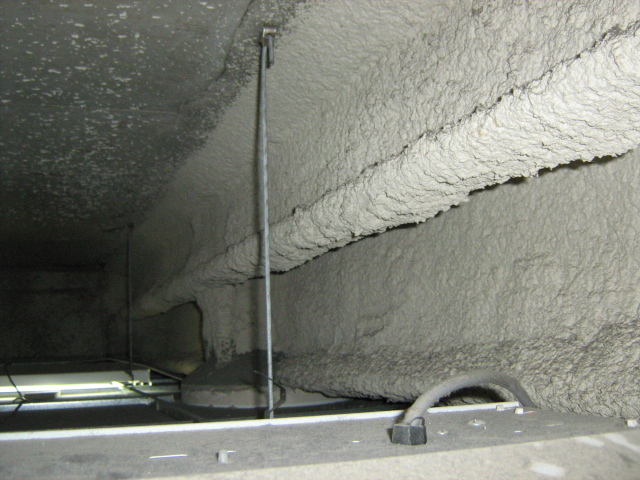In most countries worldwide, the use of asbestos in building projects has been outlawed. Prior to that, for over a century, asbestos had been one of the materials of choice in fire protection and thermal insulation applications. Since then, the construction industry found alternative products, which are ostensibly more effective, safer and greener.
Some may ask: What if the hazards of asbestos have been exaggerated to persuade the construction sector to switch to alternative products for purely commercial motives?
In response to this sceptical view, Gabriel Mizan, from the Occupational Hygiene Section of the National Institute for Occupational Health (NIOH), a body that provides a comprehensive range of asbestos-related services and advice throughout Southern Africa, says the health hazards of asbestos are real and should be taken seriously by society. Even though asbestos has been banned and no longer in use its risks persist, he warns: “Its legacy remains hidden in various shapes and forms will remain with us for many years to come, threatening lives at home and at work.”
Concealed
In actual fact, it is the hazards concealed in old buildings that should worry us the most. Asbestos, mixed with cement, can be found in roofs, gutters, pipes, boilers, ceiling tiles, insulation boards, sprayed coatings and many other products. What makes it even more complicated, observes Mizan observes, is that asbestos contains more than 3000 articles, some of which are still found in their original form in our home, work and environment.
Lung diseases
According to the World Health Organization, asbestos fibres inhaled into the lungs may cause a range of serious lung diseases, including asbestosis (scarring of the lung), lung cancer and mesothelioma (a malignant and fatal tumour that grows on the lining of the lung). The WHO estimates that worldwide there are more than 100 000 deaths linked to asbestos exposure per year and that close to 125 million workers are exposed to the deadly fibre.
Laboratory analysis
Nizan says asbestos cannot be easily recognized by the naked eye, and so, it is important to always safe assume the material contains asbestos. “It is not possible to identify asbestos with certainty by visual examination alone and laboratory analysis is often required. Asbestos in buildings is present in either loose, friable form (such as loose insulation material) or, more often, hidden within another material (such as asbestos cement products!”
In most cases, the harm from asbestos, which is contained within another material, and fibres are not released, is minimal. Processes like drilling, cutting, high pressure cleaning, demolishing or even natural deterioration and weathering disturb the fabric of asbestos containing material, releasing fibres into the air which can be inhaled. Highly exposed to asbestos material are people who work in the building and related professions, especially roofing contractors, heating and ventilation engineers, building and demolition contractors, electricians, plumbers, joiners, tradesmen, carpenters and painters.
What the law says
Recognizing the high health risk it poses, in most countries, there are regulations governing working on buildings or sites deemed to contain asbestos material in some form or the other. With regard to South Africa, similarly in other countries, the following apply, according to the NIOH:
- The South African Department of Labour Asbestos Regulations (No.155 of 2002) prohibit an employer or a self-employed individual from carrying out work that will put any person at risk from asbestos exposure.
- The Regulations also require that, where asbestos forms part of a building, plant or premises, steps are taken to ensure that the asbestos is identified and that potential exposure of any person to the fibres is prevented or adequately controlled.
- No work is allowed to take place on asbestos or ACMs before a written work plan has been devised and the necessary precautionary measures have been taken.
- Demolition or removal of asbestos and ACMs can only be carried out by an approved asbestos contractor.
On the whole, while legally bound to assess the asbestos risks in buildings, at the end of the day, the decisions on what action to take rests on project management team to decide. Doubtless, where human life is concerned there should not be cutting of corners in following due process.


i read your site ..must say your site are very informative ..and helpful
I like how they explained that asbestos can’t be found by the naked eye. I would want someone to check my building to make sure there is no asbestos because I can’t see it. I will look into having someone check my building.
It’s great that there is a regulation that states that people should have minimal exposure to asbestos. I’ve been hearing a lot about asbestos recently, so I’ve been wanting to learn more about it. Thanks for all the great information on asbestos.
Thanks for pointing out that there is a regulation stating that people should have very minimal to no exposure to asbestos. I think that just shows how hazardous it is that is why it must be removed. I guess we should call professionals since we might have an exposed one in the attic when we noticed a broken part there when we looked for a photo album this morning.